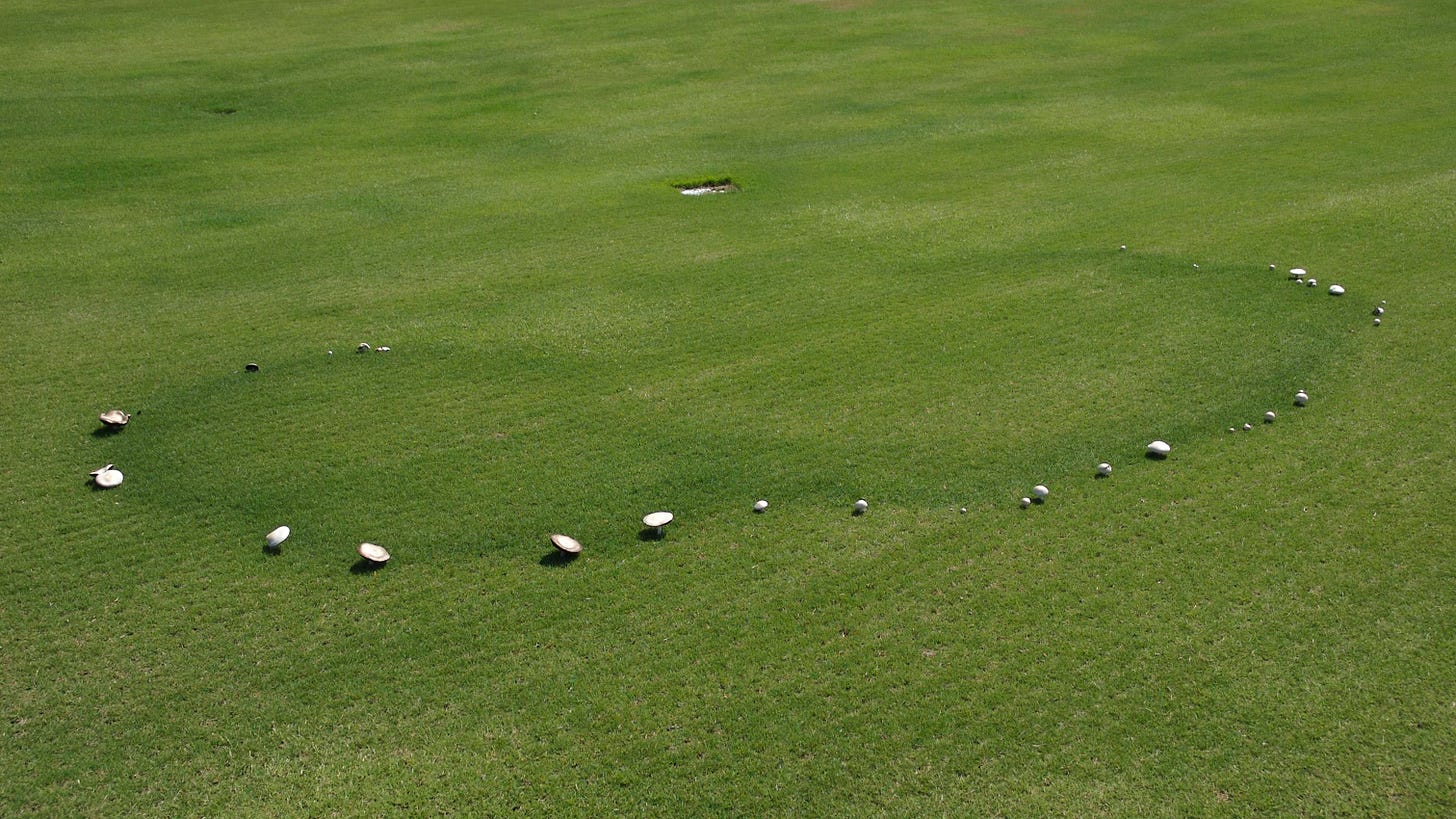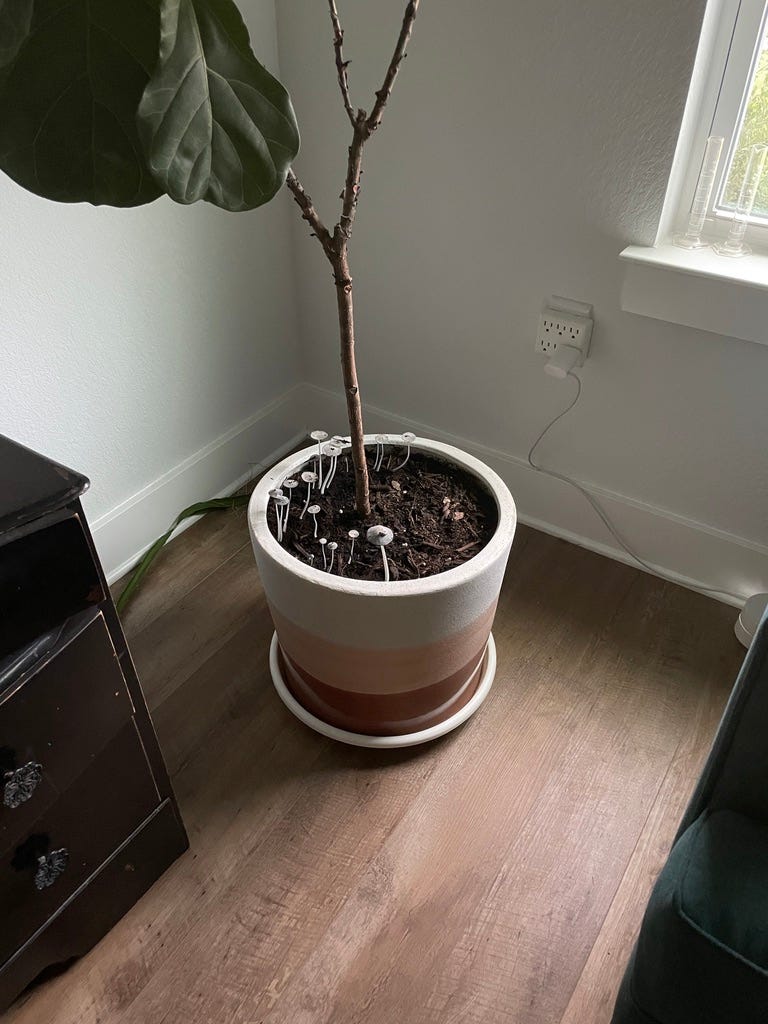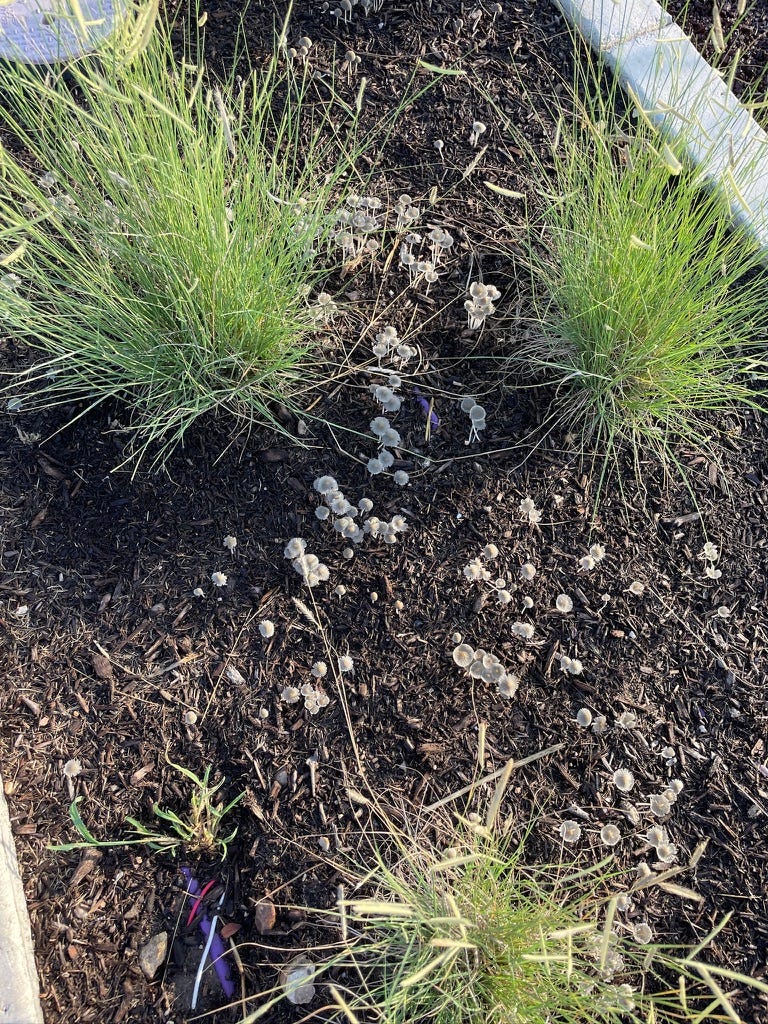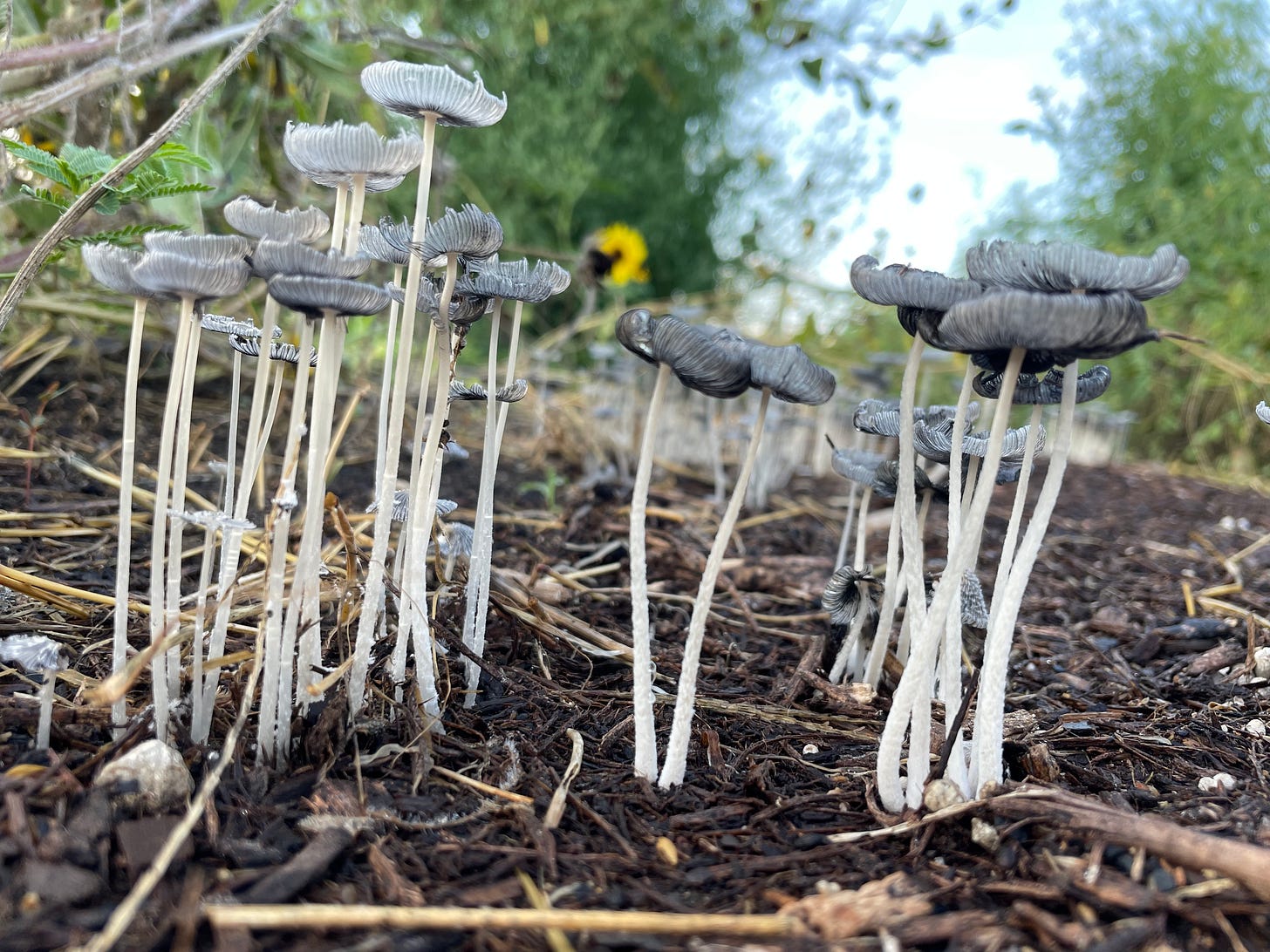Despite mushrooms gaining mainstream attention—thanks to inspiring films like Fantastic Fungi and the work of popular mycologists like Paul Stamets—many people are still unsure what to make of the curious mushroom caps that occasionally sprout up in their lawns and compost piles.
Here in Central Texas, where I’m writing from, we’ve had decent rain this summer, with each storm a wave of mushrooms and a flood of texts follow asking some variation of, “I see LOTS of mushrooms in my [garden, compost, lawn] – is that okay?!”
I get why anyone would look wide eyed—we can go months without seeing a single mushroom, and then, seemingly overnight, they pop up by the thousands. So, should you fear them or embrace them? Let’s think through this like the stewards of the land that we are and constantly becoming! 💫
Frequently Asked Questions about Mushrooms:
What are they?! What’s happening?!
In the simplest ecological terms, fungi are largely responsible for breaking down organic matter and mushrooms are the fruiting body of fungi.
Just as the purpose of fruit is to spread seeds, a mushroom’s purpose is to spread spores. A mushroom is just one part of a much larger fungal body, much like fruit is only a part of a larger plant or tree. And just as not all plants or trees produce fruit, not all fungi form mushrooms (i.e. there are other forms of reproduction).
The reason so many mushrooms appear at once is that the fungus from which it comes from has detected the perfect environmental conditions for reproduction—typically during periods of high humidity, like after a good soaking rain.
In many cases, mushrooms are short-lived, shriveling up within a day or two after fruiting and releasing their spores. However, in certain microclimates that are shady and moist, such as the understory of a forest or during extended periods of cloudy, rainy weather, mushrooms can last longer, and the fungus may continue to fruit as long as the conditions remain favorable.
This is what happened here recently! It seemed the prolific and persistent nature of the mushrooms, in an otherwise dry and hot climate, is what gave people pause. 🤔
Will mushrooms hurt my plants or lawn?
Mushrooms are generally evidence of the greater ecosystem that supports functional, healthy landscapes!
While there are parasitic fungi that feed on living roots or plant surfaces, the majority of these don’t produce mushrooms. Most mushroom-bearing fungi, known as basidiomycetes, are saprophytes, meaning they decompose organic matter like dead roots, leaves, and wood chips.
If you’ll allow me to go on a tangent, even the infamous fairy ring, which often troubles the turf industry, isn’t caused by a parasitic fungus. Rather, it’s more likely a symptom of irregular biological nutrient cycling as it tends to occur when there is a build up of organic matter.
In other words, when the soil lacks the communities of microbes that keep the process of decomposition humming at a good clip, an excess of organic matter builds up and if you’ve ever tended to grass you know all sorts of “problems”, aka nature’s solutions to the imbalance, can crop up with thatch layers, one of them being a ring of nature’s clean up crew - fungi and their mushrooms.
In the case of fairy ring, it can often just be an aesthetic issue. However, fairy ring can can indirectly harm grasses - they can generate a flood of nutrients that decline abruptly, leaving the grass a little hungover, if you will. Also, the fast paced metabolism of the fungus, and lack of other organisms to make use of their byproducts, can result in the production of hydrophobic compounds which can lead to rings of brown grass.
Nevertheless, it’s important to acknowledge that even in the case of the unpopular fairy ring, mushrooms are almost never a sign of a parasite. Rather, their presence is a useful indicator that we could be doing better to reduce disturbance and steward biodiversity belowground!
In short, with few exceptions, mushrooms will not hurt your plants or lawn.

Will they hurt me, my kids or my pets?
As with weeds, mushrooms won’t break into your home and rob you blind! Aside from taking a bite of an unidentified mushroom, they’re not going to harm you, your loved ones, or your pets.
I suspect if a child were curious enough to handle a mushroom, they’d find the smell and taste off-putting. And as for the little ones who put everything in their mouths—they’re going to be supervised, right?
Pets, on the other hand… well, some of them aren’t the brightest, bless their hearts. My dog, Clover, occasionally licks and bites soil, munches on grass, and hunts insects, but she’s never shown much interest in mushrooms, not even the culinary varieties. However, her special friend Lark has been known to make herself sick from mushrooms—will she connect the dots? Doubtful. Lark will need supervision, but it would be an overreaction to try and “eradicate” mushrooms from around her home. As we know, the fungus is always present underground and we want it there! So, during rainy weather when the conditions are right for mushrooms, Lark’s owner can check the lawn and either avoid unsupervised backyard time or take a moment to remove any mushrooms.


Is it okay if mushrooms spring up in my compost pile?
Heck yeah, it’s okay! In fact, we want lots of fungi in our compost. Seeing mushrooms in your compost is a great sign—it means your pile has carbon-rich food sources and enough moisture to support fungal growth. The spores from these mushrooms will help increase the amount of fungi in the compost, making it an even more powerful soil amendment.
Side note: If you never see mushrooms in your compost, it doesn’t mean there’s not fungi present. Fungi have other ways of reproducing. The best way to know what’s really going on in your compost is by having it examined under a microscope!
What should I do about mushrooms?
Nothing to do except to appreciate them, marvel at their odd, fleshy nature, and maybe snap a photo to try identifying a few! Most importantly, thank them for all the services they provide to us and the environment we share with them.
And if you’re finding mushrooms in your compost, give yourself a pat on the back :)

Concluding Thoughts
Would you question seeing tadpoles swimming in a creek? Likely not—it’s a natural and joyful sight! Seeing mushrooms growing on woodchips or even in your lawn is just like spotting a fish swimming in a creek—a totally natural occurrence and one worth celebrating. So next time you see those little caps popping up, take a moment to appreciate the role they play in the world around and below us.
With Love,
Andie
Resource Recs:
There are SO many great resources these days when it comes to fungi and mushrooms. If you’re interested in learning more about foraging, medicinal properties, and more, below are a few I recommend checking out.
Central Texas Mycology Society (CTMS) | @centraltexasmycology - good follow even if you’re not in Texas
Ologies Podcast: Mycology with Tom Volk – such a fun listen!
Fantastic Fungi - documentary
Inspiring popular self-taught mycologists: Paul Stamets, Peter McCoy, William Padilla Brown, Eugenia Bone, Alan Rockefeller, and my friend Daniel Reyes of MycoAlliance!
Do you have any resources to suggest? Please share in the comments!
Sources:
https://www.forbes.com/sites/linhanhcat/2020/04/11/fairy-rings/









